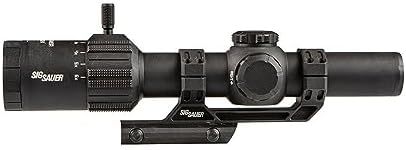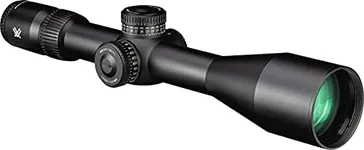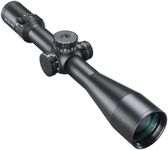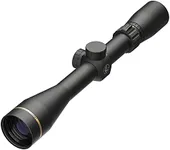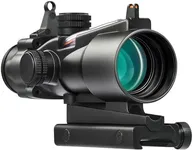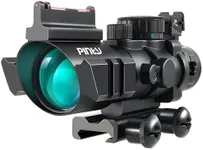Buying Guide for the Best Rifle Scope For 30 06
Choosing the right rifle scope for your 30-06 rifle is crucial for improving your shooting accuracy and overall experience. A good scope will help you see your target more clearly, make precise adjustments, and ultimately hit your target more consistently. When selecting a rifle scope, consider the following key specifications to ensure you get the best fit for your needs.MagnificationMagnification refers to how much closer the target appears through the scope compared to the naked eye. This is important because it helps you see distant targets more clearly. Scopes typically have fixed or variable magnification. Fixed magnification scopes are simpler and more durable, while variable magnification scopes offer more flexibility. For general hunting with a 30-06, a variable scope with a range of 3-9x is often sufficient. If you plan on long-range shooting, you might want a scope with higher magnification, such as 4-16x or even higher.
Objective Lens DiameterThe objective lens diameter is the size of the front lens of the scope, measured in millimeters. This spec is important because a larger objective lens allows more light to enter the scope, which can improve image brightness and clarity, especially in low-light conditions. However, larger lenses can also make the scope heavier and bulkier. For a 30-06 rifle, an objective lens diameter between 40mm and 50mm is typically a good balance between light transmission and practicality.
ReticleThe reticle, or crosshair, is the aiming point you see when looking through the scope. Different reticle designs can help with different shooting scenarios. Simple duplex reticles are great for general hunting and are easy to use. More complex reticles, like mil-dot or BDC (bullet drop compensator) reticles, can help with long-range shooting and estimating distance. Choose a reticle that matches your primary shooting activity. For most hunters using a 30-06, a duplex or BDC reticle is a good choice.
Eye ReliefEye relief is the distance between your eye and the scope at which you can see the full field of view. This is important for comfort and safety, especially with the recoil of a 30-06 rifle. Scopes with longer eye relief (around 3-4 inches) are generally better, as they reduce the risk of the scope hitting your face during recoil. Make sure to choose a scope with adequate eye relief to ensure a comfortable and safe shooting experience.
Field of ViewField of view (FOV) is the width of the area you can see through the scope at a specific distance, usually measured in feet at 100 yards. A wider FOV allows you to see more of your surroundings, which can be helpful for tracking moving targets. However, higher magnification typically reduces the FOV. For a 30-06 rifle, a balance between magnification and FOV is important. A scope with a FOV of around 30-40 feet at 100 yards at lower magnification settings is generally suitable for hunting.
Turrets and AdjustmentsTurrets are the knobs on the scope that allow you to adjust the windage (left/right) and elevation (up/down) of the reticle. Precise and easy-to-use turrets are important for making accurate adjustments. Some scopes have capped turrets to prevent accidental changes, while others have exposed turrets for quick adjustments. Consider your shooting style and needs when choosing turret types. For hunting, capped turrets are often preferred for their durability and protection against accidental adjustments.
Durability and Weather ResistanceDurability and weather resistance are crucial for a rifle scope, especially if you plan to use it in various outdoor conditions. Look for scopes that are waterproof, fog-proof, and shockproof to ensure they can withstand harsh environments and the recoil of a 30-06 rifle. High-quality materials and construction will also contribute to the longevity of the scope. Choose a scope that is built to last and can handle the conditions you expect to encounter.

